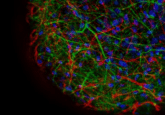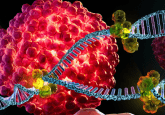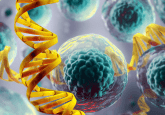Creating hairy skin
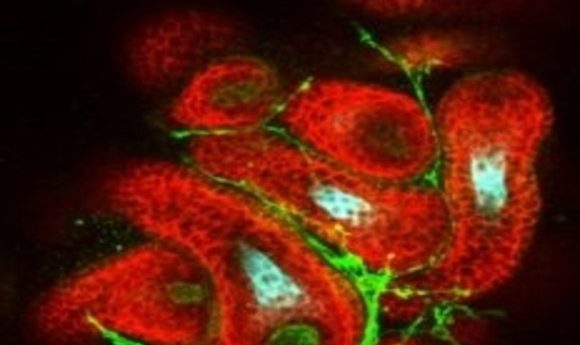
Scientists have been able to create skin cells using induced pluripotent stem cell (iPSC) techniques for some time, but these early models could not develop hair follicles. Now, researchers have found a way—by accident.
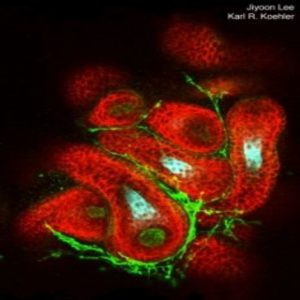
Hair follicles (red) grow radially out of spherical skin organoids
Credit: Jiyoon Lee and Karl Koehler
Human skin is a complex organ made up of three layers of tissue and a variety of different support cells. It is also home to hair follicles, the small sacs in the dermal layer that regulate the growth of hair. While researchers using early induced pluripotent stem cell (iPSC) techniques created simple skin cells, they were unable to grow the more complex organ in culture. Recently, researchers working to develop 3-D inner ear models from iPSCs solved this problem.
“In some ways, this discovery was very much an accident—as so many scientific discoveries are,” said Karl Koehler from the Indiana University School of Medicine. “But as we worked on generating the mouse and then human inner ear organoids, we developed some epidermis tissue. That’s not so surprising as the inner ear actually develops as an outgrowth of the top layer of epidermal tissue, so a byproduct was always some skin tissue.”
As Koehler and his team refined their inner ear organoid technique, they realized some stem cell lines also resulted in the development of the dermis, or bottom layer of the skin—and the signaling between the two resulted in the development of hair follicles.
“In certain conditions, the dermis would kind of wrap around the epidermis from this inside-out layer of skin, with the epidermis on the inside of the organoids. It was kind of a magical combination, allowing those cells to work together as they do during normal development,” he explained. “Once we saw the hair follicles developing, we went back to see whether we were also seeing the proper stages of skin development like you see in the mouse embryo—starting out as a simple layer and then stratifying to form specialized cells. And to our surprise, we did.”
Not only did the skin organoid create hair follicles, but also dermal fat cells, pigment cells, touch sensing cells, and gland cells. The trick, Koehler said, is the three-dimensional ball to allow the appropriate signaling between cell types.
Despite their success, Koehler cautions that there are still some technical hurdles to overcome. For example, the organoid develops in an inside-out manner, with the outer layer of skin growing in the inside of the organoid. Yet, despite that, Koehler believes this skin organoid can offer scientists a new way to study mouse skin and hair development.
“We have access now to almost the full range of progenitor cells required for the early development of the skin so we can better understand how those skin cells are being set up and establishing this self-regulating system within the development of hair follicles in the skin,” he said. “Moving forward, we want to figure out whether or not we can apply the principles we’ve derived from the mouse skin organoids to generate that same kind of self-sustaining full-thickness skin organoids with human tissue as well.”
